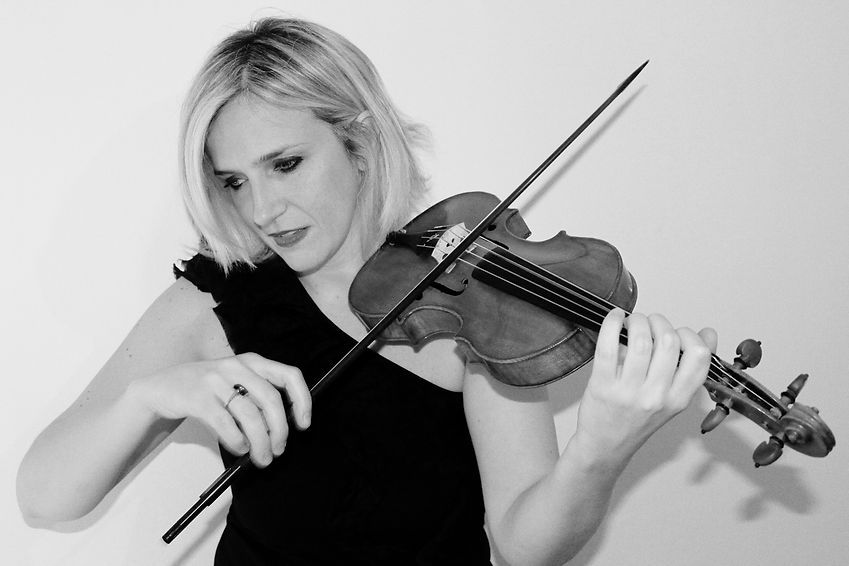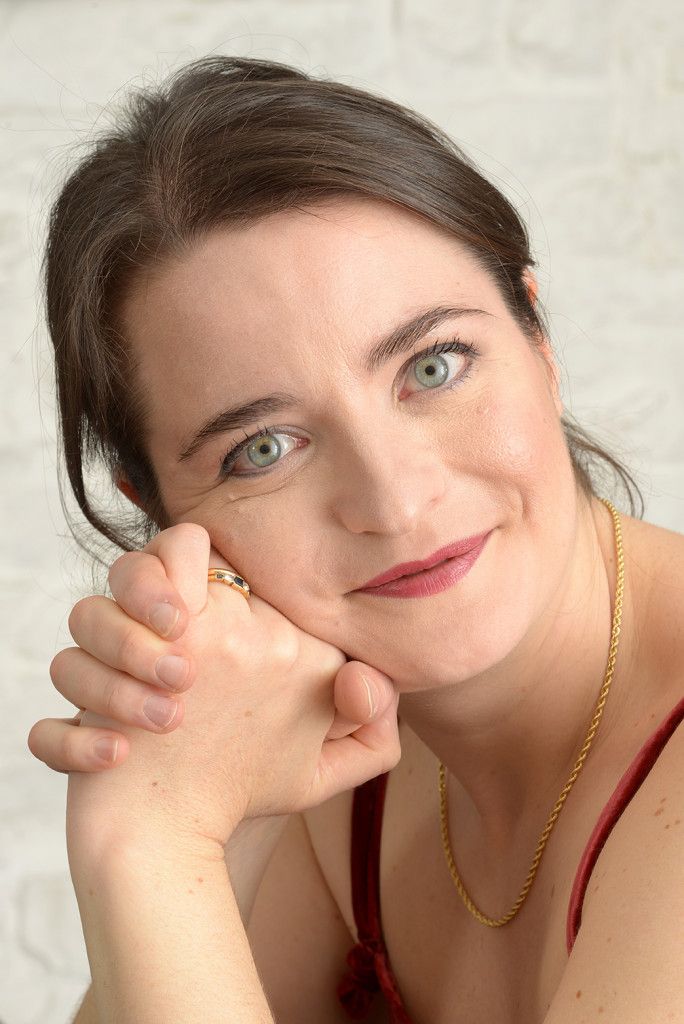Bach Violin Sonatas from Chiara Zanisi & Giulia Nuti

I encountered the Bach of violinist Chiara Zanisi and harpsichordist Giulia Nuti this year in France, as part of “L'Itinéraire” in Ton Koopman’s festival, Baroque Itinéraire. Their superb concert, as one of the several concerts in one day, comprised a selection of movements from the Bach “Sonate a Cenbalo Certato e Violino Solo”; this is a reproduction of that review, and a consideration of Zanisi and Nuti's complete recording on the Arcana label. Here’s the review:
Les Sonates d’un Goût Etranger: Bach. Chiara Zanisi (violin); Giulia Nuti (harpsichord). Église Saint Barthélemy de La Chapelle Montaboulet.
Sonatas for Violin and Harpsichord: c, BWV 1017: IV, Siciliana; D, BWV 1014: III, Andante; E, BWV 1016: III, Allegro; F minor, BWV 1018: V, Largo; BWV 1019a: Cantabile; A minor, BWV 1015, All;egro assai
What a way to crown the actual itinerant bit of the Itinéraire! A selection, very carefully picked and sequenesd of movements for Bach’s Sonatas for Violin and Harpsichord, BWV1014-19, performed with real passion and love for the music. This is the one that split the critics present, as tuning was not always 100% - but intent was. And while Zanisi and Nuti’s two-disc recording on the Arcana label of all six sonatas complete is miraculous, there was that much more spirit live.
This was a bit like the Italian tour earlier, but around Bach. The first piece showed us immediately what a fine duo this is. Giulia Nuti is one of the finest harpsichordists I have heard (the very first movement on the programme, from BWV 1017, revealed this from the off) while Zanisi showed a real sense of resilience and wiry strength. Fascinating to hear that, when Zanisi changed her dynamic to piano/pianissimo, how the whole world of Bach changed (the harpsichord’s dynamic remaining constant, of course). While the Andante of BWV 1014 was a touch less secure technically, it remained fascinating, holding a heart-stopping duet between violin and the harpsichordist’s right-hand. The tempo was perfect, too. In contrast, the finale of the fourth sonata (E major, BWV 1016) is a regular hailstorm of notes, exciting and involving.
From a last movement to a first: that of the F minor Sonata, BWV 1018, a Largo that opens with an extended harpsichord solo, the violin ushering itself in in its lowest register, resonant, musing, Zanisi’s sound throaty, almost conspiratorial. The slowly evolving counterpoint was a deeply moving. Fabulous that they should play the Cantabile, BWV 1019a, based on an aria from the cantata BWV 120, Gott, man lobet dich in der Stille. As the harpsichord takes the main interest, the violin adds its own off-the-cuff comments – and how Zanisi’s violin spoke.
Finally, the Allegro assai from the second sonata, full of vim. There was the occasional timing issue here - this was the fifth time the ladies had played this programme in one day, one should remember. Still, they weren’t too tired to play an encore (the Adagio from the G major).


The complete recording is on Arcana ia a handsomely presented fold-out twofer. Here’s a promotional video for the project, including interviews:
Zanisi plays on a Joseph Gagliano violin (Naples, 1761), while Nuti plays on a Keith Hill harpsichord after an anonymous German 18th century instrument. The strenths of both pl;ayers can be heard straight away, in the first two movements of the B-Minor Sonata, BWV 1014 (an Adagio followed by an Allegro):
The perfectly-judged expressivity of the opening Adagio and the active engagement and perfect unanimity of the Allegro are embematic of the entire set.
There is something about the way Zanisi and Nuti instantly transport the listener to an exalted place of peace in thw slow movements. The Second Sonata begins with a movement marked “Dolce,” and how sweet is this performance:
The Second Sonata is just as successful, [articularly the the command both players (particularly Zanini, it strikes me) show in the concluding Presto:
This last example seems to capture perfectly the youthful vivacity inherent in these works (they were composed while Bach was at Cöthen, just after Das wohltemperierte Clavie). In an interview included in the booklet, Nuti says the following about their approach to performing this music, which seems perfectly borne out by the example immediately above:
The idea of Bach as a demi-god to be venerated, accessible only to the greatest interpreters, belongs to the Romantic period. Our approach is simpler. To discard that aura of untouchability and, without fear, enjoy the experience of performing his music.
The detail one can hear - and the perfect tuning - in the Allegro scond movement of the E-Major Sonata, BWV 1016, is remarkable; the finale (anther Allegro) offers similar traits, Zanisi's articulation a minor miracle :
The second disc persents not onlt the balancing three sonatas, but an exatra movement we’ll come to in a moment. First, the C-Minor Sonata (the fourth). This key area seems paticularly poignant. Zanisi speaks in the interview that she attempts to be a “channel” for the music, and there is certainly a heavenly (and powerfully profound) flow to the Largo of BWV 1017:
The affective power of the trill - no mere ornament here - comes into force in the ensuing allegro:
The multiple lines Zanisi finds in the solo violin part in the finale is but one example of her mastery of this idiom, while the fluency of Nuti’s performance is superb.
There is no marking for the first movement of the Fifth Sonata (F-Minor, BWV 1018), although YouTube adds a 'Largo' to the designation; Zanisi and Nuti turn it into almost an aria from one of the Cantatas, such is the level of eloquence here. Here’s what Zanisi has to say:
I find the first movement [of BWV 1018] very poignant; after many years we now take it much more slowly. We look to the bowing for the breath that allows those long notes to sing, while the violin is submerged in the harpsichord’s vibrating phrases in an F minor both sad and warm, but full of hope.
And there is a sense of joy in Bach’s unending invention in the violin/harpsichord exchanges in the second movement Allegro:
The Fifth Sonata (F-Minor, BWV 1018) is particularly interesting, its Adagio an extended harmonic sequence with suspensions, calling on the violinist’s stopping ability:
The sixth and final sonata begins in a riot of colour, and in the third movement, Nuti has a real chance to shine (and shine she does!):
There is a final single movement, the Cantabile ma un poco adagio, BWV 1019a (there are three versions of BWV 1019). The music is ornate, and has a natural, quasi-improvisatory sense of flow here:
The set is perfomed at A = 426. If there is one criticism to make, it is that the harpsichord seems slightly recessed in the sound picture - a pity as Nuti is superb throughout.
Nuti’s disc Les Sauvages: Harpsichords in Pre-Revolutionary Paris won a Diapaison d'Or - there appears to be only one copy left in stock at the time of writing on Amazon, so be quick ....
